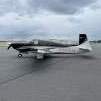Yoke sticky , hanging up
-
Members Online
- 201Steve
- Reddaero
- Hank
- Fritz1
- gmendoza
- wburger1
- pkellercfii
- Joshua Blackh4t
- LANCECASPER
- Planegary
- 1964-M20E
- PeytonM
- Marc_B
- M20F
- TCC
- Blaze
- hammdo
- bluehighwayflyer
- dkkim73
- 47U
- 0TreeLemur
- Jft1025
- DXB
- pipinai
- tpapilot
- Roseusaf
- MikeOH
- Thedude
- Pinecone
- Jblanton
- Jetdriver
- Paul Thomas
- crxcte
- DonMuncy
- PT20J
- claytonfly
- Ivan
- mitchsm
- McMooney
- NickG
- Stealth Mooney


Recommended Posts
Join the conversation
You can post now and register later. If you have an account, sign in now to post with your account.